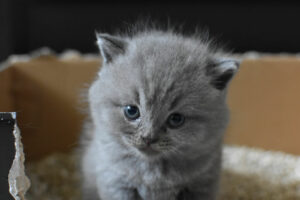A group of cats is accurately referred to as a clowder. Additionally, terms like ‘clutter’ and ‘glaring’ are also valid for describing a group of cats. These unique collective nouns highlight the distinct identity of feline groups.
Groups of wild cats have different collective nouns: ‘dowt’ and ‘destruction.’ A neutered male cat is known as a ‘gib,’ and an unneutered male is a ‘tom.’ Female cats are referred to as ‘molly.’
The term ‘cat’ originates from the Old English word ‘cat,’ which has its roots in the Late Latin word ‘catus,’ meaning domestic cat. This term likely comes from an Afro-Asiatic word ‘kaddîska,’ referring to wild cats.
Fascinating Cat Facts
- Cats have a remarkable survival rate from high falls, with a study showing about a 90% survival rate from falls as high as 32 stories.
- Cats cannot taste sweetness due to a mutation in their taste receptors.
- Cats purr at a frequency similar to an idling diesel engine, around 26 cycles per second.
- Domestic cats can reach speeds up to 30 mph. Their domestication dates back to around 8000-9000 BC, earlier than previously thought.
- It is now believed that cats were self-domesticated, gradually adapting to human settlements for hunting purposes.
Cat Anatomy and Behavior
- Cats have a free-floating clavicle bone, allowing them to squeeze through tight spaces.
- Cats can withstand high temperatures, a trait thought to be a remnant of their desert origins.
- Cats have excellent night vision and hearing, able to hear ultrasonic frequencies used by rodents.
- Catnip’s appeal to cats is due to the chemical nepetalactone, which mimics a pheromone found in cats.
Cats in Human Society
- Domestic cats typically live 12 to 14 years, with the oldest recorded cat living to 38 years.
- Certain human foods like chocolate, onions, and garlic are toxic to cats.
- Male cats have barbed penises that trigger ovulation and attempt to remove competing sperm in females.
- While domestic cats are pets in many parts of the world, they are consumed as food in some regions of Asia.
Understanding Catteries
A cattery is the designated term for a place where cats are housed. It’s not just a shelter but a space specifically designed to cater to the needs and comfort of cats, whether in a private home, a breeding facility, or a rescue center. Catteries ensure a safe, nurturing environment for cats, reflecting the importance of specialized care in feline wellbeing.
The Etymology of ‘Kitty’
The term ‘kitty,’ used affectionately for cats, evolved from ‘kitten,’ with influences possibly from an older term referring to a young woman or girl. This term highlights the endearing relationship between humans and cats, where cats are often regarded as part of the family.
Female Cats
Female cats are referred to as ‘queens’ or ‘molly,’ the former, particularly in breeding contexts. This terminology emphasizes the significant role female cats play in cat breeding and the high regard in which they are held, especially in professional cattery environments.
The Rarity of Calico Males
Calico cats, known for their distinct black, white, and orange fur, are almost exclusively female due to their unique genetic makeup. The rarity of male calicos, approximately one in 3,000, makes them a fascinating subject for genetic study and cat enthusiasts alike.
Do Cats Understand Human Meows?
While cats may respond to human attempts to meow, they likely perceive these sounds as part of human language, not genuine feline communication. This interaction, often leading to a cat purring or meowing back, underscores the unique bond between cats and their human companions, even if true linguistic understanding is not present.
Lost Companions in Need
Stray cats are former pets that have become lost or abandoned. Their history as companion animals makes many of them suitable for re-socialization and adoption. Understanding the plight of stray cats is crucial in promoting responsible pet ownership and supporting rescue efforts.
Cat Statistics
- It’s estimated that there are over 600 million cats in the world. This number includes both domesticated cats and feral cats. The sheer size of the global cat population highlights the extensive impact cats have on various ecosystems and human societies.
- In the United States alone, approximately 70% of cats that enter animal shelters are euthanized. This is a stark contrast to dogs, of which approximately 50% are euthanized. This statistic underscores the challenges faced by animal shelters and the need for more adoption and spaying/neutering programs.
- Domestic cats are listed among the top 100 most invasive species. Their predation on wildlife, particularly birds and small mammals has a significant impact on local ecosystems. Responsible cat ownership, including keeping cats indoors, is crucial to minimize this environmental impact.
- Cats are extremely efficient in their water usage. They originated from desert climates and evolved to extract moisture from their prey, allowing them to survive in arid environments. This biological adaptation is why cats often drink less water compared to other pets.
- Contrary to popular belief, only about 10% of the U.S. population is allergic to cats. Cat allergies are typically caused by proteins found in cat dander, saliva, and urine. This statistic is often surprising to many, considering the common perception of cat allergies being more prevalent.
- Owning a cat can reduce the risk of heart attacks and strokes by more than a third, according to a study. The calming presence of cats, along with the companionship they offer, is believed to significantly lower stress and anxiety levels in their owners.
- Cats have the cognitive ability to sense human emotions and can learn by observing other cats. Studies have shown that cats can interpret human gestures and facial expressions to a certain degree, indicating a level of social intelligence that is often underrated.
From the staggering global population to their unexpected environmental impact and remarkable adaptability, cats continue to fascinate and surprise us. Their unique characteristics, from aiding human health to demonstrating surprising social intelligence, underscore their special place in both the natural world and our homes. It’s this blend of mystery, elegance, and complexity that keeps our curiosity about these beloved creatures perpetually piqued, making every discovery about them a delightful revelation.

I learned today that domestic cats have an incredible rate of survival when they fall…

It’s common knowledge that cats are fiercely independent animals. We believe that this is a…

How do you get your cat to utilize the litter box, or how do you…

Some say that the noise of a cat throwing up over a pricey carpet is…

